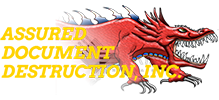Remote teams are no longer the exception; they’re becoming the norm in many industries. The flexibility and adaptability of remote work come with undeniable perks, but they also introduce unique challenges. Among these, staying organized and maintaining data security stand out as critical pain points for remote teams.
Poor document management can lead to everything from misplaced files and reduced productivity to serious data breaches that put your business at risk. However, with the right strategies, tools, and practices, these challenges can be turned into opportunities for better collaboration, efficiency, and security.
This post dives into the importance of proper document management for remote teams and provides actionable steps you can start implementing today to protect and streamline your work processes.
The Importance of Proper Document Management for Remote Teams
Remote teams rely on the seamless exchange of information. Documents ranging from project outlines to sensitive contracts are the lifeline of remote collaboration. This dependency highlights how critical document management is for smooth operations.
Here’s why proper document management is a must:
- Enhanced collaboration: Centralized storage means everyone has quick access to the latest version of a document, reducing miscommunication and redundant tasks.
- Better security: Proper document storage and sharing protocols minimize the risk of sensitive information falling into the wrong hands.
- Improved productivity: Organized files save time and ensure that your team spends more time on meaningful work rather than searching for misplaced documents.
On the other hand, poor document management leads to disarray. Disorganized folder structures, outdated files, or insecure sharing practices open the door to data breaches, inefficiency, and even compliance violations.
Actionable Steps for Secure and Organized Document Management
To help your remote team thrive, here are five strategic steps to implement secure and efficient document management practices:
Use a Secure Cloud-Based Document Management System
The days of saving files on personal devices should be long gone. A secure, cloud-based document management system is essential for storing, organizing, and accessing documents remotely. Platforms like Google Drive, Dropbox, and Microsoft OneDrive centralize all your documents, making them accessible anytime, anywhere.
Here’s how to make the most of these systems:
- Choose platforms with advanced encryption: Protect sensitive documents by selecting systems that offer strong encryption protocols.
- Establish consistent folder structures: Segregate files by team, project, or category to make navigation quick and seamless.
- Enable automatic backups: Ensure your cloud system automatically backs up files to prevent data loss.
Implement Access Control and Permissions
Not every document needs to be accessible to every team member. Remote teams should use access controls to grant permissions based on roles or necessity. This protects sensitive company information while ensuring team members have everything they need.
Practical tips for access control include:
- Limit access: Only allow essential team members to view and edit sensitive documents.
- Audit regularly: Review permissions periodically to ensure former employees or unnecessary parties no longer have access.
- Enable two-factor authentication (2FA): Adding a second layer of authentication, like OTPs or biometric scans, ensures your documents are extra secure.
Regularly Schedule Document Review and Decluttering
Even a virtual workplace needs “spring cleaning.” Regularly reviewing stored files helps eliminate outdated or unnecessary data, ensuring that your document library remains relevant and organized.
Start with these tasks:
- Declutter unnecessary files: Utilize workflows or tools designed for digital decluttering.
- Archive non-essential files: Move inactive files to a dedicated archive folder or system for future reference.
- Securely destroy sensitive data: Use professional document shredding services to destroy files you no longer need but contain sensitive information.
A clean, organized system keeps your team focused and prevents excessive digital clutter.
Encourage Secure File Sharing Practices
File sharing is a double-edged sword. While necessary for teamwork, improper sharing practices can jeopardize data security. Avoid common mistakes like sharing files without encryption or sending sensitive information over unsecured platforms.
Here’s how to share files responsibly:
- Use secure sharing tools: Rely on platforms like WeTransfer or services offering encrypted email.
- Require passwords: Always add password protection to sensitive files.
- Set expiration dates: Ensure file-sharing links expire after a certain time to limit unauthorized access.
Train Your Team in Secure Document Management Practices
Your advanced tools won’t matter if your team doesn’t know how to use them. Regular training sessions educate team members on secure document handling and ensure consistent practices across the board.
Topics to cover in training include:
- Recognizing phishing attempts and potential security risks.
- Crafting strong passwords and avoiding password reuse across platforms.
- Safe practices for sharing, accessing, and managing files securely.
- To know when a file needs document shredding.
Training ensures every team member becomes a proactive participant in maintaining secure and organized operations.
Secure and Organized Remote Teams Thrive
Remote document management is more than a necessity; it’s an investment in your team’s productivity and security. When executed properly, it simplifies collaboration, reduces risks, and boosts overall efficiency.
Implementing these strategies might take effort, but the payoff is well worth it. Think of it as building a solid foundation that supports the long-term success of your remote team.
Need help with securely disposing of files you no longer require? Contact us today for professional document shredding services and take one more step toward a smoother, organized workflow.




